Radford Semele Neighbourhood Plan - Regulation 16 Submission
(1) 4.0 Key Issues
4.1 This section sets out the key issues that will be addressed through the RSNDP. These have been identified from previous work on the Radford Semele Parish Plan, the Parish Housing Needs Survey, those raised during previous consultations in 2017 and 2018 (Table 1), and from the policy assessment and evidence-based review that was carried out in preparing the RSNDP.
Table 1. Consulting on the Radford Semele Neighbourhood Development Plan
|
Date |
Event/milestone |
|
9th September 2016 |
Neighbourhood Plan Steering Group formed & First meeting held |
|
26th October 2016 |
Parish Council issues Notification of Interest in Neighbourhood Plan to Warwick District Council |
|
11th November – 23rd December 2016 |
Warwick District Council Consultation on Designated Area |
|
29th December 2016 |
Neighbourhood Area designated by Warwick District Council |
|
23rd June - 21st July 2017 |
Housing Survey period |
|
30th July 2017 |
Housing Survey published |
|
24th September – 5th November 2017 |
Initial Village Consultation |
|
30th September 2017 |
Initial Village Consultation Drop in Event |
|
Nov-Dec 2017 |
Letters sent to Local Community Groups & Businesses requesting Feedback |
|
5th March – 3rd April 2018 |
Preferred Options Consultation |
|
14th April 2018 |
Preferred Options Drop-in Event |
|
24th June – 5th August 2019 |
Regulation 14 Consultation |
Housing
4.2 The Warwick District Local Plan identifies all major housing commitments (i.e. developments of 25 dwellings or more with planning permission). Information Map 4 shows the Radford Semele village envelope as defined in the Local Plan. The village envelope has been extended to include the major housing developments (275 dwellings in total) which were granted planning permission between 2015-16 prior to adoption (yellow hatching). In addition to these commitments a small development of 25 dwellings was also given planning permission in 2015 to the west of the village opposite Radford Hall. The village envelope also takes account of this.
4.3 At the time of publication of the RSNDP (February 2020) the progress of all new developments in the District Local Plan are as follows:
- 65 dwellings in Spring Lane (W/14/0433) – under construction;
- 60 dwellings north of Southam Road (W/14/0322) – completed;
- 150 dwellings south of Offchurch Lane (W/16/0196) – under construction; and
-
25 dwellings opposite Radford Hall (W/17/1961) - completed
4.4 The proposed new housing number up to the end of the plan period (2029) exceeds the allotted number in the Local Plan by 116 dwellings[4], "with a resultant increase of some 38% of the total dwellings in the village". The RSNDP will, therefore, not look to identify further sites or change the growth village envelope. These will remain unchanged and be used to manage any proposed housing growth to 2029. This is based on one of the key conclusions in the Local Plan Inspector's Report that:
"The level of housing growth which is already committed will result in a very substantial expansion of the built form of the village and subsequent increase in its population in a relatively short space of time. Significant sites on the edge of the village have recently been granted planning permission for housing to the north of site H38 (150 dwellings) and at Spring Lane (65 dwellings). There is very limited, if any, capacity at the school and no realistic prospect of it being expanded on site or a new school being provided in the village under current circumstances. There is no need to allocate further sites in order to ensure sufficient housing growth in the village or to meet the overall housing requirements for the District.[5]"
4.5 The village envelope will remain unchanged and existing site allocations are sufficient to meet and manage any proposed housing growth to 2029. The RSNDP will, however, look to influence the type and mix of any new home(s) that might be built in the area up to 2029. This will be informed by the Housing Needs Survey that was been carried out in 2017. Local people told us the following in the Housing Needs Survey (Figure 7).
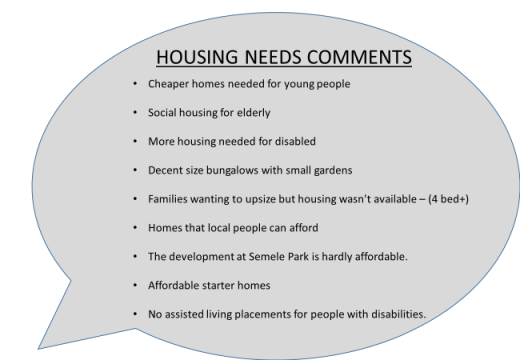
Figure 7 Housing Needs Comments from Consultations
4.6 These comments reveal a strong desire for a range of types and sizes of homes to meet the requirements of local people: housing of the right type, size, tenure and price.
4.7 The Local Plan includes policy on affordable housing that the RSNDP will not seek to replace or duplicate.
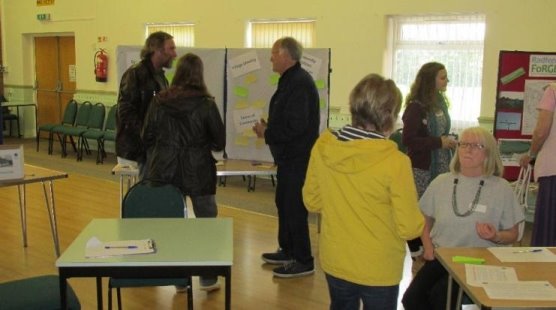
Figure 8 Consultation drop-in event, 30th September 2017, 120 people attended
4.8 The neighbourhood area's population will increase significantly in the coming years, due mainly to the new housing estates. This will place pressure on existing green spaces and open land resources. The RSNDP will seek to protect existing key open land and green spaces. We know this is a key issue from the Housing Needs Survey and comments fed back by the community.
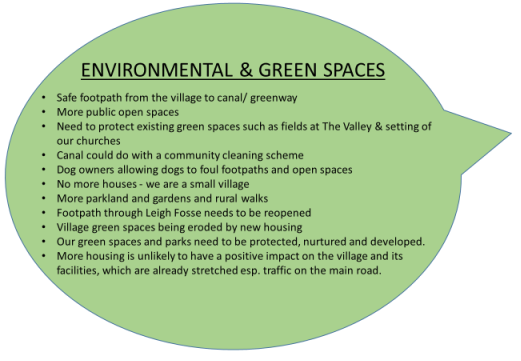
Figure 9 Comments relating to Environmental & Green Spaces
- there is a need to protect key open spaces that are intrinsic to the character and identity of the village and keep these under review, e.g. Church Fields, Leigh Foss;
- access to the countryside, canal and other outdoor recreation resources should be maintained and improved;
- the open land between Radford Semele and Royal Leamington Spa should be retained as open land to maintain the separate identity of the settlements and prevent coalescence; and
- the important views in the village and wider neighbourhood area must be protected.
Community and Recreation Facilities
4.10 Local community and recreation facilities are central to the health and well-being of any community. The RSNDP will seek to protect existing and future community facilities (e.g. shops, pub, halls etc.) and existing/future formal recreation spaces, such as the Village Playing Field.
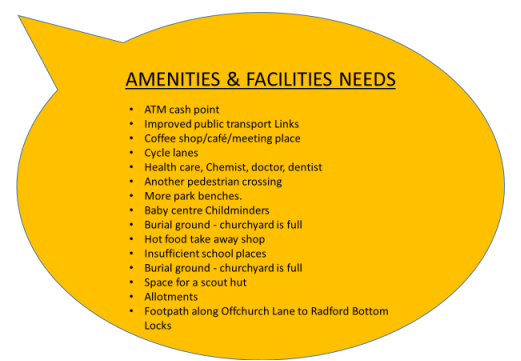
Figure 10 Comments made on Village Amenities & Facilities First Consultation
4.11 A wide variety of comments concerning local facilities were made at the drop-in events and Regulation 14 consultation, including:
- provision of allotment space;
- improved bus services and facilities, including a bus shelter on Southam Road, recently provided by the Parish Council;
- improved healthcare provision and access to health facilities;
- concerns about the size and future capacity of the school; and
- need for a scout hut due to increased population demand and insufficient facilities to accommodate youth activities.
Heritage
4.12 The RSNDP area has existing designated heritage assets (the 11 listed buildings in Appendix 4 and one locally listed heritage asset in Appendix 5). In addition to these buildings that already have a high degree of protection the RSNDP seeks to identify 15 non-designated heritage assets for protection (identified in Appendix 6).
4.13 Non-designated heritage assets are buildings, monuments, sites, places, areas or landscapes identified by the local community as having a degree of heritage significance but do not meet the criteria for designated heritage assets. Only a minority have enough heritage significance to merit identification as non-designated heritage assets.

Figure 11 Pillbox, near Radford Semele Bridge
Natural Environment
4.15 The RSNDP offers an opportunity for local people to identify those key resources within the natural environment that should be protected through the planning system. The RSNDP also offers an opportunity to identify areas where such features could be enhanced.
4.16 The RSNDP will identify areas of valued local landscape and use planning policy to protect the key attributes of these areas.
Transport
4.17 Initial consultations highlighted concerns about transport issues in the neighbourhood area, including:
- pedestrian safety, including access to and from village centre, especially from new developments;
- volume and excessive speed of traffic in the village;
- school crossing;
- more buses and measures to encourage walking, particularly walking to school;
- improved street lighting; and
- better car parking.
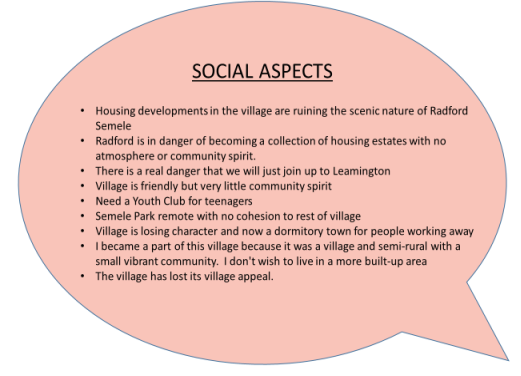
Figure 12 Comments on Social Aspects Made at Consultations
4.18 Perhaps inevitably, given the scale of change taking place in the area, a major issue that has been identified is the need to retain the village's identity and sense of community. This stems from the development proposed for Radford Semele village, and how further growth will impact on the physical and social character of the village. There are also concerns that the growth of Radford Semele village and Royal Leamington Spa could see the separation of the two settlements diminish to the point where Radford Semele is no longer a distinct, separate community.
4.19 The thought that Radford Semele might, through uncontrolled development, eventually merge with Leamington, Sydenham and Whitnash and lose its village identity is of deep concern to the community. Not surprisingly, this was one of the top issues expressed in the July 2017 Housing Needs Survey, and at the various drop in consultation events. In the previous Local Plan this gap was protected by policy. However, this policy was removed from the Local Plan. There is a real need to have something in place to recognise the needs of the village concerning coalescence with its neighbouring settlements.
Infrastructure
4.20 Much of the village drainage system predates Victorian times. As a result, run-off water and foul drainage are, in places, mixed. During heavy rainfall, this can result in overloading of the system, e.g. raw sewage escaping from the manhole cover on Southam Road at the bottom of School Lane. This crosses the road surface down towards St Nicholas church, which is very unpleasant, creating a potential public health issue. There is also an issue at the junction of Lewis Road with the Valley and Valley Road at the bottom of the hill. Sewage laden run-off can enter gardens and run along the road in extreme weather conditions. Concerns have been expressed that the new housing developments will put more pressure on this straining drainage infrastructure. The infrastructure for any new housing developments needs to ensure that this situation is not exacerbated or, as part of the development, is brought up to modern standards.
4.21 Fast broadband (or an acceptable equivalent) is an essential requirement for a thriving village community. Whilst acceptable speeds are available for many properties there are still some properties which have very slow speeds. We will work with telecommunications providers and with government bodies to support the rollout of super-fast broadband (or an acceptable equivalent) to all properties in the village.
4.22 Sustainable transport is an ever more important issue. Sufficient public and private charging capacity will be required to support the rollout of electric cars. RSNPG supports initiatives that promote the Government's Road to Zero Strategy both in the promotion of alternative sustainable public transport initiatives and the shift of vehicles from fossil fuels to electric vehicles (EV). This would include provision of any new property developments to be "electric vehicle ready", and for suitable public or non-residential charging points at appropriate sites around the village. The development of the EV strategy is still in consultation[6], but the principles set out would be supported. We would welcome the opportunity to be part of any proposals from either local or central government agencies to trial the use of public charging points in village settings. More widely we will support government agencies and utilities providers in understanding and meeting the needs of the village for sufficient charging capacity to be available for the rollout of electric cars.
4.23 With the increase in population from the housing developments, there is a valid case for improvements to the provision of a regular, reliable, affordable and sustainable public transport serving the village.
[4] para 335, Report on the Examination of the Warwick District Council Local Plan , The Planning Inspectorate, July 2017
[5] para. 336, Report on the Examination of the Warwick District Council Local Plan , The Planning Inspectorate, July 2017